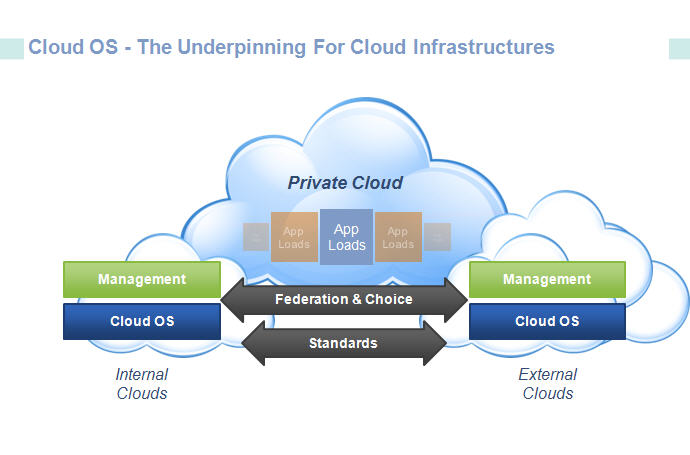VMware unveils its cloud OS; Wants to be a bridge for the enterprise

VMware on Tuesday will announce its cloud operating system---dubbed vSphere 4---with plans for general availability in the second quarter.
With the effort, VMware is attempting to bridge virtualized data centers---now known as "private clouds"---and growing cloud computing services from the likes of Amazon and others. However, this bridging process is a work in progress due to the lack of standards. VMware's big pitch is that vSphere can run your data center and allow you to bridge out when external resources are needed.
VMware's John Gilmartin, director of product marketing at the company, says the company is hoping to ease enterprises into cloud computing without redoing architecture. "There's a big gap between what most people talk about as cloud and what people are doing today in the enterprise," said Gilmartin. VMware's plan is to get cloud providers to use its operating system and then seamlessly hook up to enterprises using vSphere 4.
It's unclear what happens if a vSphere shop isn't hooking up to another VMware powered cloud. Gilmartin said the company is working behind the scenes on application swapping among clouds, but didn't have details or timelines for these standards. It is clear that VMware sees vSphere 4 as a way to thwart both Microsoft's cloud OS, Azure, and its virtualization effort, Hyper-V.
Gilmartin argued that Microsoft's approach with Azure requires too many architecture changes for enterprises. He also noted that vSphere will support more operating systems.
In the meantime, VMware has packed enough features in vSphere 4 to keep enterprises interested for their own IT as a service plans.
Among the key features:
- A 30 percent increase in application consolidation ratios;
- Up to 50 percent in storage savings by allowing virtual machines to only use storage as needed;
- Up to 20 percent additional power and cooling savings;
- vSphere 4 also scales better with the ability to pool 32 physical servers with up to 2048 processor cores, 1,280 virtual machines, 32 TB of RAM, 16 petabytes of storage and 8,000 network ports.
Here's the chart detailing vSphere 4 vs. VMware Infrastructure 3 (in the "current" column):
One of the more interesting features of vSphere is a fault tolerance option. Data center managers can keep their most valuable apps running even if the underlying hardware fails. By clicking a box to protect a virtual machine, vSphere 4 creates a shadow copy of the application to take over in the event of a failure. There is a performance hit since you're allocating computing resources to the shadow application, but Gilmartin notes that only 20 percent to 30 percent of enterprise software would have to be fault tolerant.
VMware's price list for vSphere 4 looks a bit complicated to untrained eyes---notably mine---but here's the summary.
